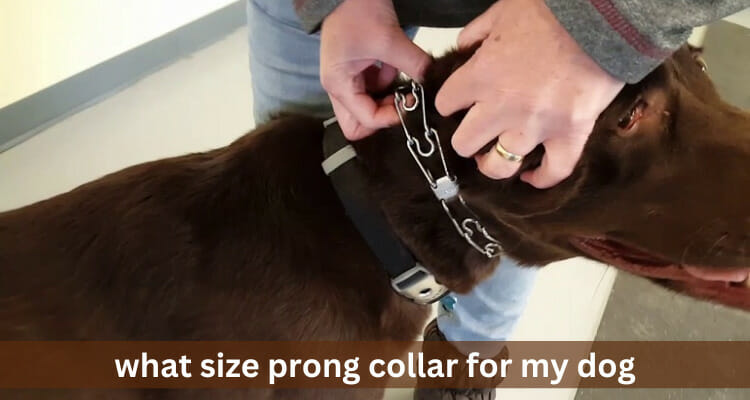Is your furry friend in need of a collar adjustment?
Whether you’ve recently adopted a new four-legged companion or your canine companion has grown out of their current collar, knowing how to make a dog collar smaller is a valuable skill for any pet owner.
Welcome to our ultimate guide on shortening dog collar in just a few easy steps, we’ll show you how to ensure a comfy and snug fit for your furry pal, so you can relax and enjoy worry-free adventures together.
Let’s dive into the details and learn how you can easily modify your dog’s collar for a better fit.
How to make dog collar smaller – Step by Step Guide
What tools and materials you will need?
Before diving into the process of how to make a dog collar smaller, it’s important to gather all the necessary materials and tools. Here is a list of what you’ll need:
1. The existing dog collar that needs resizing.
2. Measuring tape or ruler.
3. Scissors or rotary cutter.
4. Sewing machine or needle and thread.
It’s always best to have all these items ready before starting so that you don’t have to interrupt yourself midway during this DIY project!
Here are step by step comprehensive guide about how to make dog collar smaller:
Step 1: Assess the Current Fit
Start by examining your dog’s collar. Is it too loose, causing it to slip off easily? Does it leave enough room for your fingers to slide underneath comfortably? Understanding the current fit will help you determine how much adjustment is needed.
Step 2: Gather the Necessary Supplies
To make your dog’s collar smaller, you’ll need a few basic supplies as explained above.
Step 3: Measure and Mark
Using the measuring tape or ruler, determine the desired length for your dog’s collar. Remember to leave a bit of extra room for comfort. Once you have the measurement, mark the spot where you’ll be making the adjustment. This will serve as a guide during the next steps.
Step 4: Remove Excess Material
Carefully remove any excess material from the collar. Take your scissors and cut along the marked spot, ensuring a clean and straight cut. Be cautious not to cut too much at once; it’s better to trim gradually and check the fit as you go.
Step 5: Secure the Edges
To prevent untangling and ensure durability, secure the edges of the collar. Thread the needle with the durable thread and make small stitches along the cut edge. This will create a neat finish and prevent any unraveling over time.
Step 6: Test the Fit
Now it’s time to try on the resized collar. Slip it around your dog’s neck and fasten it securely. Check for a snug fit – you should be able to fit two fingers comfortably between the collar and your dog’s neck. If it’s too tight or too loose, make further adjustments accordingly.
Step 7: Double-Check Safety Features
During the resizing process, ensure that all safety features of the collar are intact. Check that the buckle, D-ring, and any additional attachments are securely fastened and functioning properly. Safety should always be a top priority for your furry friend.
Step 8: Monitor Your Dog’s Comfort
Keep an eye on your dog in the following days to ensure they are comfortable with the new collar size. Look for any signs of discomfort, such as excessive scratching or rubbing. If necessary, make additional adjustments to achieve the ideal fit for your pup’s comfort.
Step 9: Celebrate Success!
Congratulations on successfully resizing your dog’s collar! Now your furry friend can roam around comfortably, knowing that their collar fits perfectly. Treat them to some extra love and playtime as you both enjoy the benefits of a well-fitting collar.
Remember, the safety and well-being of your dog should always come first. If you encounter any difficulties during the resizing process or have concerns about the collar’s fit, consult a professional dog trainer or veterinarian for further assistanc Happy collar resizing!
Tips for making a successful adjustment
Sure! Here are the key points for making a dog collar smaller:
- Accurate Measurement: Measure the dog’s neck to determine the amount of material to be taken off the collar.
- Right Tools and Materials: Gather the necessary tools such as scissors or a seam ripper, and additional hardware if required.
- Remove Decorations and Tags: Take off any decorations or tags from the collar, noting their placement for reattachment later.
- Gradual Adjustments: Start by removing excess material slowly in small increments to avoid cutting too much at once. It’s easier to trim more later if needed.
- Check the Fit: After each adjustment, try fitting the collar on your dog to ensure a snug fit without being too tight or uncomfortable.
- Patience and Attention to Detail: Be patient throughout the process, paying close attention to measurements, cuts made, and how well the collar fits around your pet’s neck.
By following these points, you can successfully adjust the dog collar to provide a comfortable and secure fit for your furry friend.
How to check the fit of the collar?
It’s important to ensure that your dog’s collar fits properly. A collar that is too loose can easily slip off, while a collar that is too tight can cause discomfort or even injury.
To check the fit of your dog’s collar, start by making sure you can fit two fingers comfortably under the collar when it is on your pet. This ensures that the collar isn’t too tight and won’t cause any discomfort or harm.
Next, test the snugness of the collar by gently pulling on it. The collar should be tight enough so that it doesn’t slide over your pet’s head but not so tight as to restrict breathing or cause choking.
It’s also important to regularly inspect collars for signs of wear and tear, particularly if they are made from fabric. Over time, fabric collars may become frayed or weakened in certain areas which could lead to them breaking unexpectedly.
Alternatives to Resizing a Dog’s Collar
Here are the key points regarding alternatives to resizing a dog collar for a proper fit:
- Collar Extenders:
Consider using collar extenders, available in different sizes and materials, to increase the length of your dog’s existing collar. These can easily be attached through the buckle or fastening system.
- Harnesses:
Opt for a harness instead of a traditional collar. Harnesses distribute pressure evenly across your dog’s body and provide added support, making them suitable for dogs with respiratory issues or neck injuries.
- Adjustable Clips:
If you prefer keeping the regular collar but don’t want to resize it permanently, try using adjustable clips such as safety buckles. These allow you to make the collar tighter without altering its size permanently.
- New Collar Purchase:
If none of the alternatives mentioned above work, consider buying a new collar that is properly sized for your dog. Selecting the right size and type of collar or harness ensures your pet’s comfort and safety during walks and other activities.
By considering these points and exploring alternative options, you can find the best solution to ensure your dog’s collar fits comfortably and securely.
Conclusion
There you have it, a complete guide on how to make a dog collar smaller. With the right tools and materials, this process can be done quickly and easily.
It is essential to check the fit of the collar regularly, especially if your pet is still growing or gaining weight. Additionally, always keep in mind that alternatives such as buying a new adjustable collar or seeking professional help from a veterinarian are also available.
Resizing a dog’s collar may seem daunting at first, but with these easy-to-follow tips and tricks, you’ll be able to adjust any size of collars like an expert.
FAQs
How do you make a small dog collar smaller?
To make a small dog collar smaller, remove excess material gradually, in small increments, until it fits snugly around your dog’s neck without causing discomfort.
What if my puppy’s collar is too big?
If your puppy’s collar is too big, consider using adjustable collars that can be easily resized to fit their growing neck or opt for a smaller-sized collar that provides a snug and secure fit.
Can you shorten a collar?
Yes, a collar can be shortened by removing excess material or cutting it to the desired length. However, it’s important to do so carefully to avoid compromising the functionality and fit of the collar.
What happens if a collar is too loose?
If a collar is too loose, it can slip off or become a safety hazard, potentially allowing the dog to escape or causing discomfort while walking.
How do you tighten an animal collar?
To tighten an animal collar, adjust the buckle or fastening system to ensure a snug fit without causing discomfort or restricting their movement.



